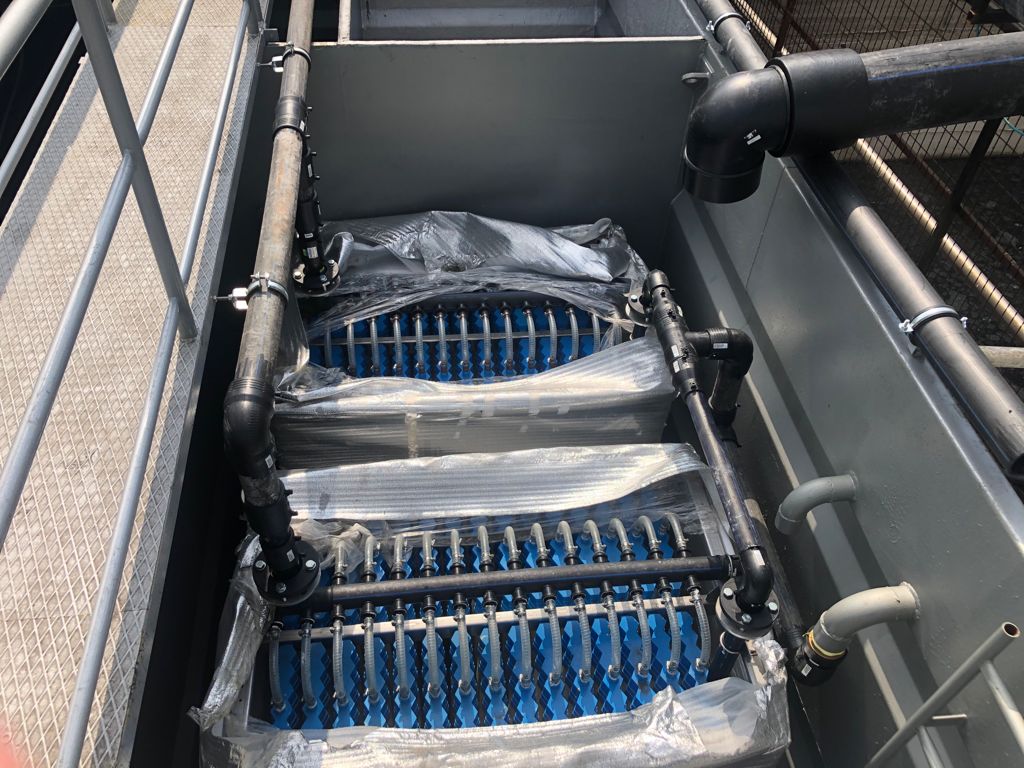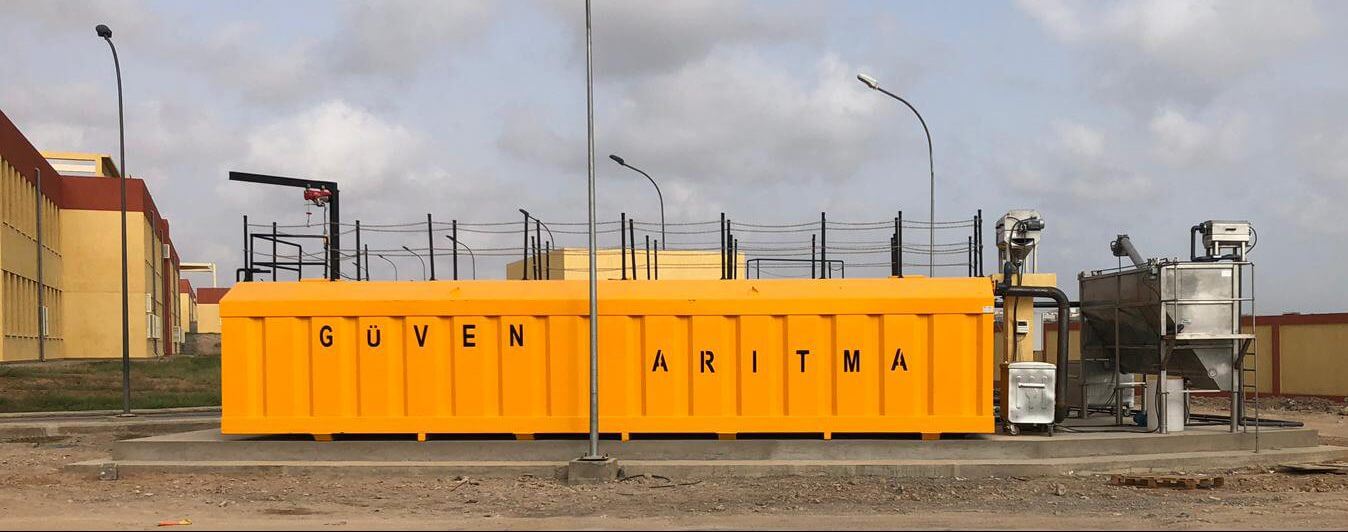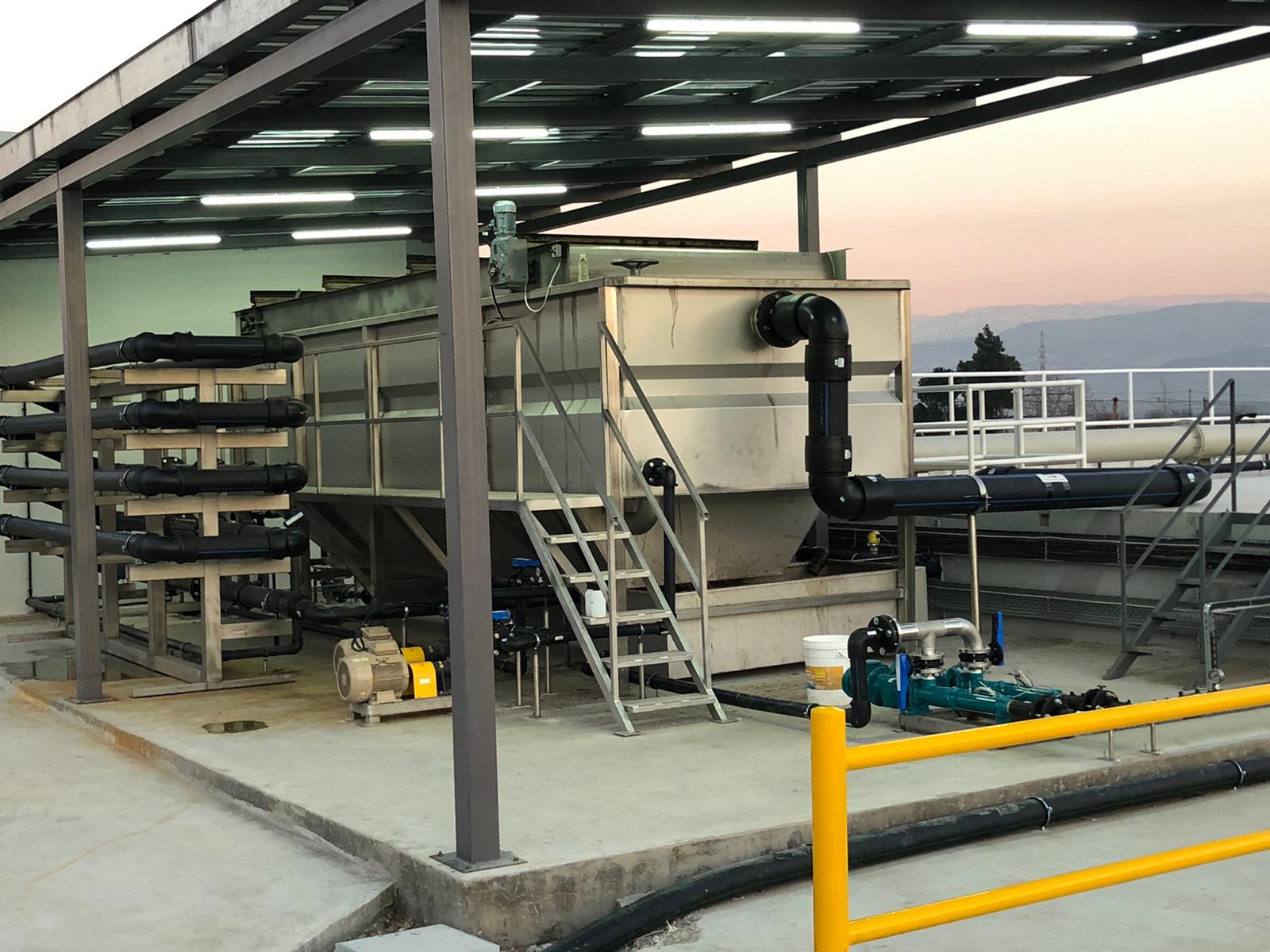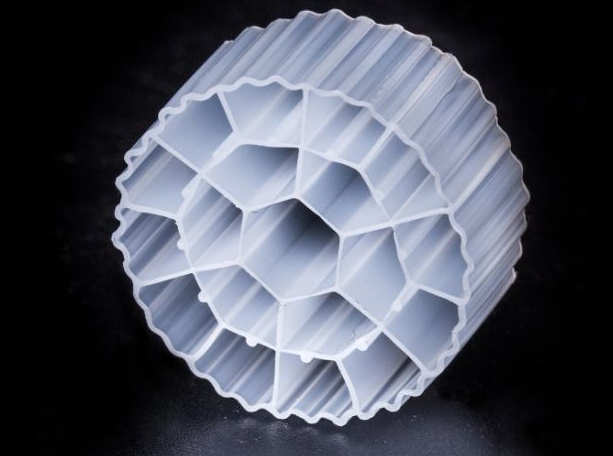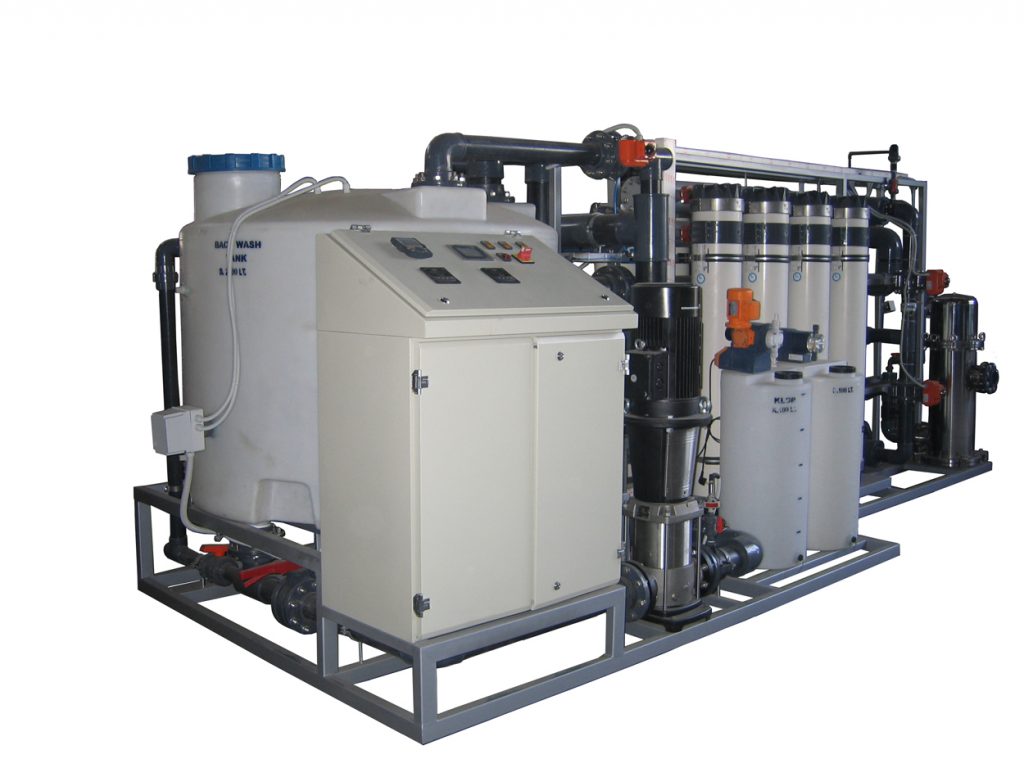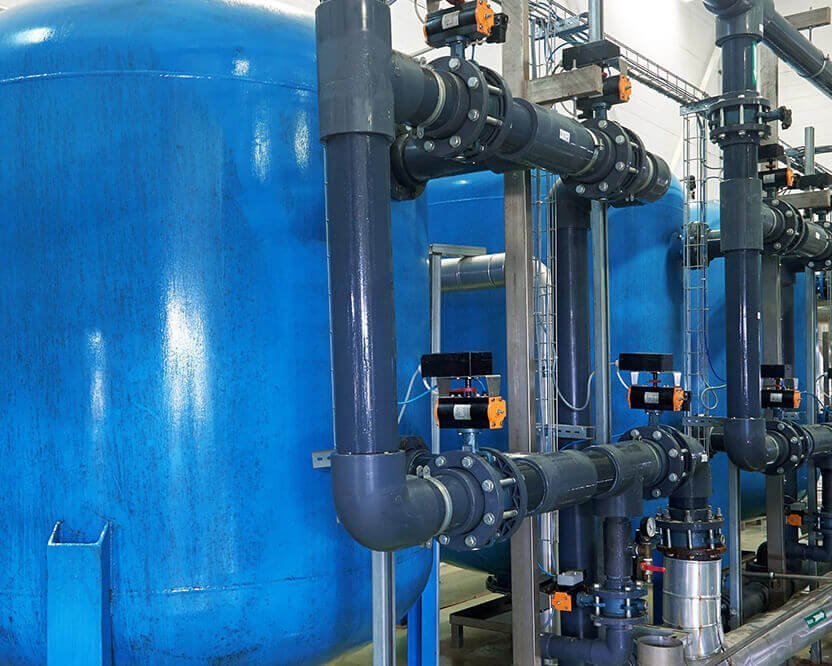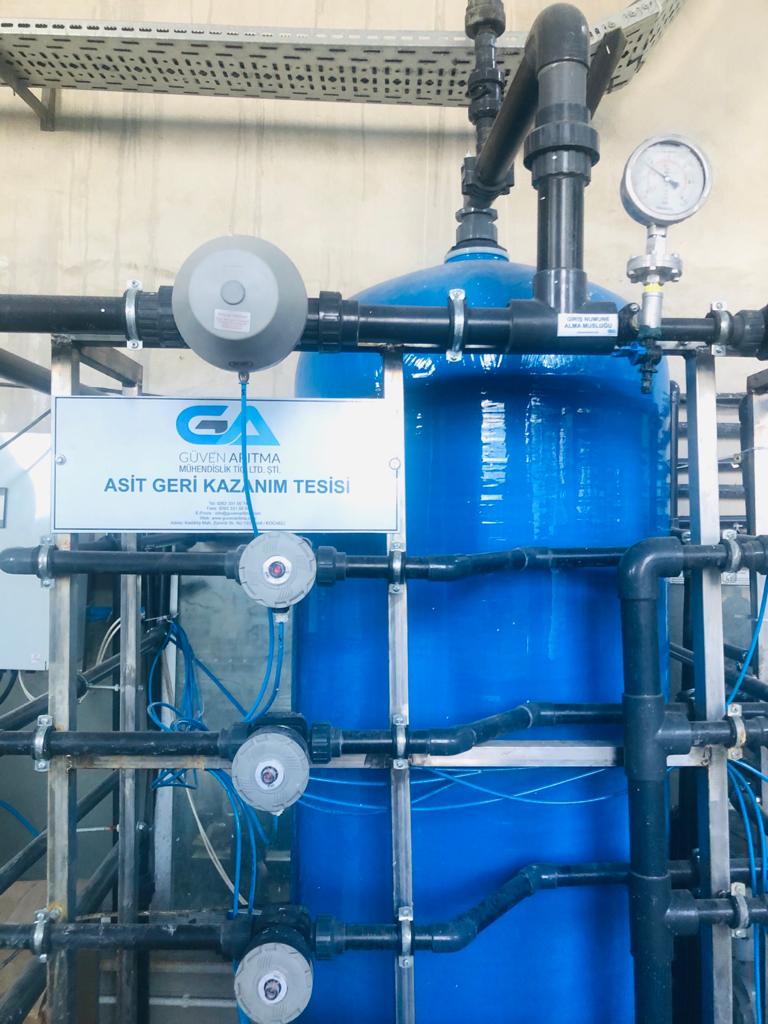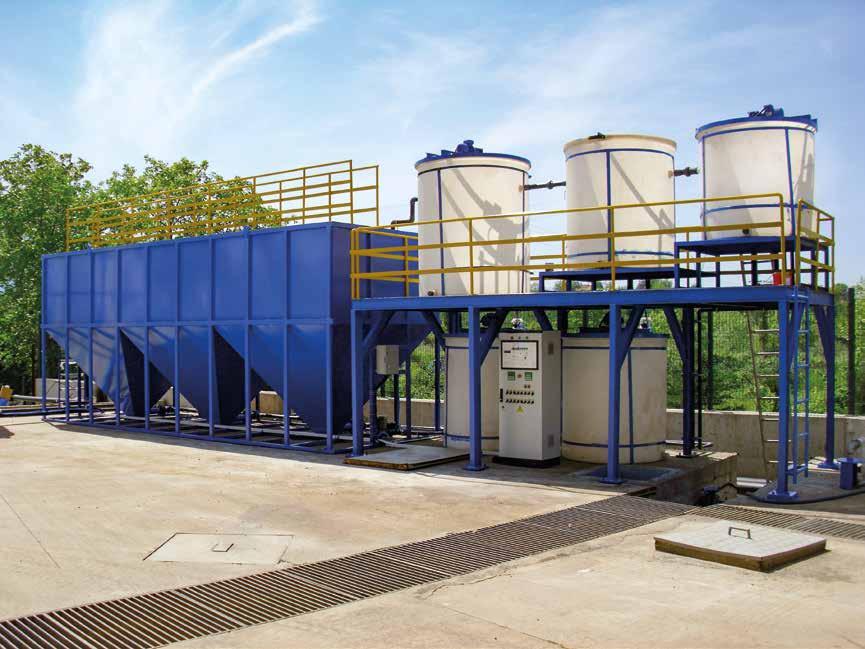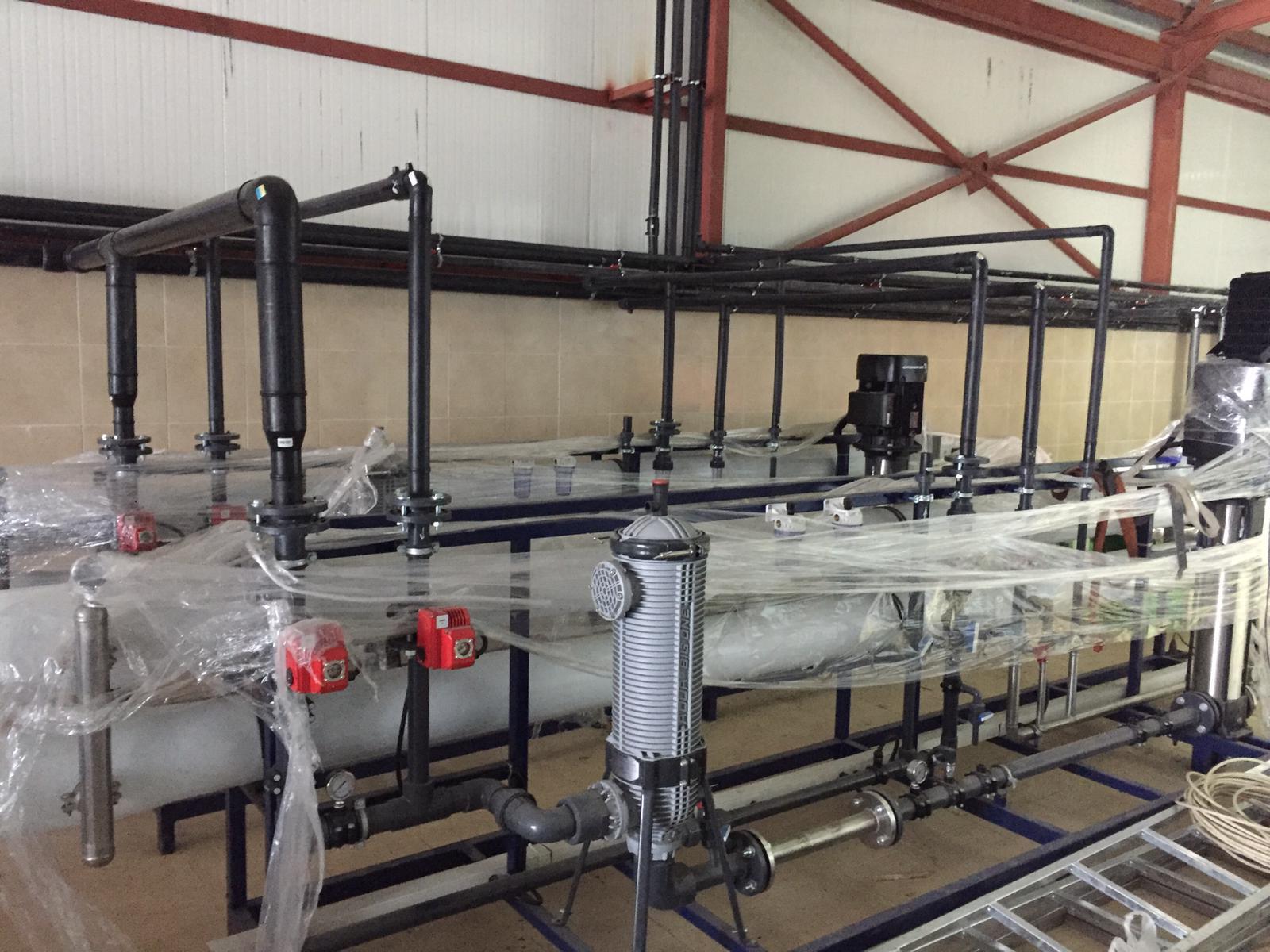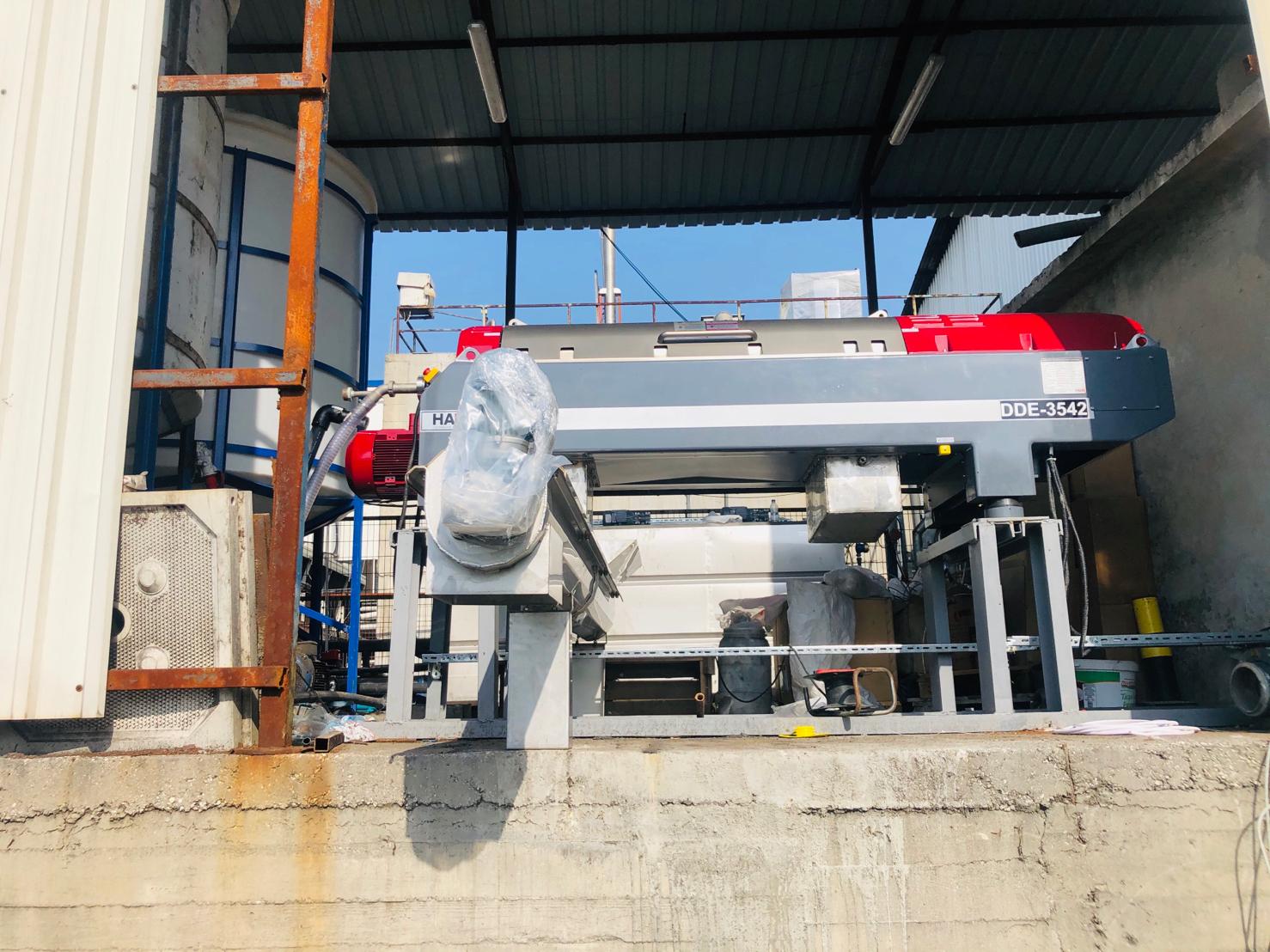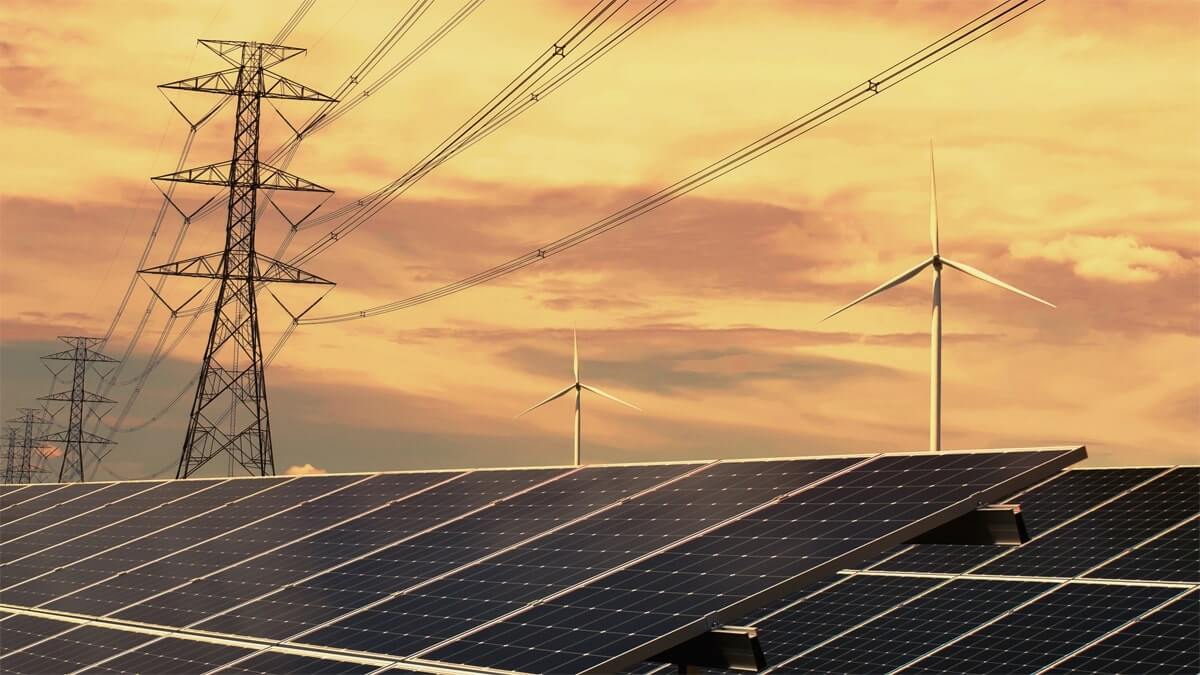Ovacık Mahallesi, Kullar Caddesi No: 241 C1 Blok, 41000 Başiskele/Kocaeli
Products
Membrane Bio-Reactor Systems (MBR)
Membrane Bio-Reactor Systems are advanced form of activated sludge systems. These systems are a combination of biological reactors and membrane technology. After biological treatment instead of using a secondary clarifier Ultrafiltration or Microfiltration membranes are used for separation phase. IMPORTANCE OF MEMBRANE TREATMENT SYSTEMS Membrane technologies are gaining popularity due to their low area requirement and high efficiency in treatment. PURPOSE OF MEMBRANE TREATMENT SYSTEMS High-rate removal of biodegradable materials, microbes, turbidity, particles, surface-active materials. DETAILS OF MBR TREATMENT SYSTEMS Membrane Bio-reactor type (MBR) treatments use latest composition of ultrafiltration and aerobic biological treatment reactor technologies. Submersible membranes can be placed inside a biological reactor or external membranes utilizing positive pressure can be applied in this technique. Wastewater from biological treatment passes through the membrane resulting filtration of particles smaller than 0,2 microns. Solids larger than this size such as microorganisms and particles are removed from wastewater. Continuous flow on filter surface prevents clogging and EPS formation. If an instance occurs where particles stick to membrane filter surface, periodic backwash with treated wastewater and chemical rinsing will clear membrane surface both physically and chemically. The water used in backwashing along with chemicals used for rinsing flows to biological tank to be treated. MBR technique provides high treatment efficiency while eliminating need of secondary clarifier. Also, due to high surface area to volume ratio provides 3 times lower area requirement for aeration tank when compared to conventional biological treatment. This results in 70% reduction on layout area and construction fields. VARIOUS MBR TREATMENT FIELDS Advanced treatment of domestic and industrial wastewaters Instances where receiving environments are river basins Treatment of high pollution wastewater Treatment trains resulting in irrigation and water reclamation Projects where area is limited for conventional techniques Projects where capacity increase results in treatment plant being insufficient Water reclamation for processes with high water consumption Most important criteria on membrane selection is membrane flux. One other factor is cost. Depending on the wastewater type membrane selection can change. If treated water is going to be reclaimed, membranes with better effluent quality can be chosen. On large scale plants cheaper membranes can be utilized to reduce cost. Also, membranes should not be inclined to clog and they should be easily cleanable. Nitrogen removal can be done in MBR systems. Before aeration, anoxic tank can be installed. Even without anoxic tank due to high biomass concentrations some parts of aerobic tank become anoxic. This results in better nitrogen removal than conventional activated sludge systems. MBR Systems Successfully Applied: Wastewater recycled for irrigation purposes. (Bacteria and solid particle treatment) Wastewater recycled for industrial purposes. (Nanofiltration, reverse osmosis, pre-treatment for UV and ozone) Capacity increase on conventional treatment plants. (Increase in sludge concentration) Area conservation in new treatment plants. (Increase in sludge concentration and no requirement for secondary clarifier) ADVANTAGES AND DISADVANTAGES OF MEMBRANE BIO-REACTOR SYSTEMS Among many advantages of MBR systems, high efficiency on organic matter removal, treatment of difficult waters, low sludge production, high disinfection capability of effluent, high load rates, less polluted sludge production, treatment stability of nutrients and low area requirement can be noted as most significant. Aside from that, there are also disadvantages of MBR systems. Most inhibiting factor in application MBR treatment system is related to first investment and operational costs (electricity consumption, duration of membrane operation). This fact causes a disadvantage in treatment of large volumes of wastewaters. Secondly MBR systems would be more applicable when discharge standards are strict or when water is going to be reclaimed. This technology will be more affordable as membrane process cost decreases.
Package Biological Treatment
Package Biological Treatment Designed for some wastewaters, high recycling rate, fully automatic and no operator requiring compact units are called Package Biological Treatment Units.
Moving Bed Biofilm Reactor (MBBR)
With high volume to area ratio MBBR media we are installing high efficiency treatment plants.
Ultrafiltration (UF)
Ultrafiltration is a membrane filtration process where liquids are pushed with hydrostatic pressure through a semipermeable membrane. Fundamentally UF is a pressure driven separation process dependent on particle size. On lower pressures particles categorized by size are separated. Macromolecular separation occurs on particles sized between 10-1000Ao1. Total Dissolved Solids and smaller molecules pass through the membrane. Some of the removed materials are; colloids, proteins, microbiological contaminants and large organic molecules. Aside from water and wastewater treatments UF membranes are used in pharmaceutical, automotive, chemical, food and drink industries. Also, UF is used in vaccines, fermentation products, enzymes and separation of proteins.
Nanofiltration (NF)
Nanofiltration is used to remove bacteria, viruses, organic material and hardness from water. Separation process is made on an organic semipermeable membrane. In the process driving force is the pressure difference between feed and permeate side of membrane. System removes approximately 1 nanometer (10 Ao) sized particles. Typical applications are; removal of color and total organic carbon from surface waters, removal of harness and Radium from well water, in food and wastewater applications separation of organic material from inorganic materials.
Acid Reclamation
We are designing treatment plants for firms which make aluminum production or firms which desire to decrease acid wasting and to reclaim acid as added value.
Package Chemical Treatment
Chemical treatment applications are utilized where industrial wastewater is generated such as factories or production plants. Designed depending on density and capacity, package chemical treatments can be moved where they are required. Rapid and slow mixing with addition of chemicals, settling and sludge collection are backbones of this complicated wastewater treatment. Güven Arıtma produces these package treatment units to operate on optimum efficiency and without any noise or odor pollution to the environment while still ensuring regulated effluent characteristics are provided. Package chemical treatment system can be designed in different volumes and capacities depending on pollution loading and flowrate. Produced from St 37 Black Carbon Steel, two layers of undercoat paint and two layers of epoxy paint ensures protection from rust. On our systems we choose our materials based on quality, low error chance and minimum maintenance requirement to lower expenses after long operations.
Package River Water Treatment
Mostly preferred in small settlements, to obtain clean drinking and usage water treated from natural sources. Turbidity, color, odor, taste and organic material parameters are treated for drinking and usage water norms. Instances where area and supply time of water is limited, River Water Treatment is applied. Plant is designed with aim of quality water consists of; oxidation, physical treatment, pre-chlorination, chemical treatment, settling, filtration, disinfection and sludge treatment units. Depending on geographical conditions of location gravity flow or sub-lifting stations can be designed to provide hydraulic flow. Modular, compact and mobile systems are easily operated. Additional units can be used to increase capacity. These systems are preferred when there is no permanent water requirement such as worksites or camping sites.
Reverse Osmosis (RO)
Instances where conventional treatment of water is not sufficient (seawater, high conductivity well waters etc.) reverse osmosis method which removes all unwanted minerals is utilized. Yielding pure water from membrane filtration. Working principle of reverse osmosis are the membranes mounted in the device. Water is forced with high pressure through the membrane pores. During this process water and some inorganic molecules can pass through the membrane while most unwanted materials are unable to pass. The passing water is called product water while water couldn’t pass which includes most unwanted materials and molecules is called concentrate water.
Automation (PLC, SCADA)
With usage of SCADA (Supervisory Control and Data Acquisition) from control of equipments used in an organization, process steps, environmental control systems to substations all unit control and monitoring is possible. Monitoring instantaneously, noting alarms and past activities SCADA gives control any time of the day. In all our treatment plants as in turn-key policy; all electrical systems, automation and SCADA branches are served.
